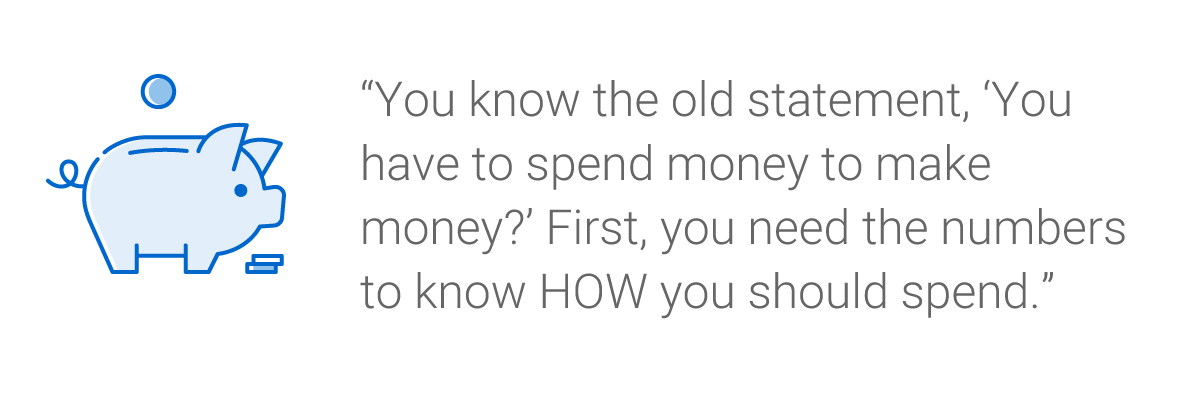David Nagy is an entrepreneur and online marketer with many e-commerce successes under his belt, including eCommerce Canada, EcoDiva Beauty and Live Out There. He’s developed solutions for brands like Virgin Mobile, GM and HBO.
It’s easy to get started in e-commerce, as there are no barriers to entry, but there are definitely barriers to success. Especially as most businesses take time before they become profitable. E-commerce giant Amazon famously took nine years before seeing its first profitable year. Elon Musk waited a full decade before Tesla Motors had a profitable quarter.
Few of us can access the deep pockets and patient investors of Amazon’s Jeff Bezos or Elon Musk. I want to see that my businesses will be profitable in the near future. I also need solid data so that I know how much I can afford to invest into my businesses’ growth.

- Unit economics measure how much your products cost you, how much you mark them up and your gross profit.
- Customer acquisition cost (CAC) reveals how much you spend to acquire a customer through marketing channels, trade shows and even product development.
- Customer lifetime value (CLTV) is how much revenue you generate from a customer over the time period that the customer buys from you.
READ PART 1: 3 key revenue indicators growing e-commerce businesses must track
Let me take you through how to track and calculate these three KPIs. This small effort pays off, big-time.
1. How to calculate unit economics for e-commerce
We entrepreneurs tend to be optimists, so it’s an easy mistake to buy at a 50 per cent margin and only consider the profit. We can forget about the other unit economic numbers like credit card fees, returns and shipping costs. They add up!
I recently went through this with my online store, EcoDiva Beauty. Small costs, like platforms and payment apps, ate away my profits. For example, I paid $1,100 a month to a marketing coordinator. But once I dug into my unit economics, I saw I needed to earn $10 for every dollar I spent. That meant my marketing campaign needed to bring in an extra $11,000 a month before I even started to make a profit on this particular growth investment.
Stay in the loop. Get the latest e-commerce tips, resources and news delivered right to your inbox.
Sign up nowIf you are growing quickly, it’s easy to miss the signs. The money flowing in can hide the fact that your expenses make it impossible to generate a profit.

- The marketing cost to acquire the customer
- Bank fees to accept the customer’s payment
- Packing supplies
- Shipping costs
- Labour costs to fulfill the order
After you subtract these costs, your $12 profit might be closer to zero. Or worse, it can cost you money to fulfill a customer’s order!
Tip:
Returns happen – especially in online retail. A common mistake of small e-commerce businesses is failing to plan for returned orders. When you talk sales revenue, make sure you’re referring to net revenue – your sales, minus returns, over a period of time..
READ ALSO: 3 key considerations of a winning returns strategy
For a clear picture of your unit economics, you will build and maintain spreadsheet models. Don’t panic! Even if you only track your top 10 best-selling products, you’ll be ahead of most of your competitors. There’s no need to reinvent the wheel – take advantage of the hard work of operators who came before you.
Now you can answer the question “Which of my products are my most profitable?” After looking at the numbers, you might even decide to drop a few of your best-selling products. I’ve learned that just because an item is selling doesn’t mean it’s producing a positive net cash flow.
2. Customer acquisition cost (CAC)
Do you know how much it costs to acquire a customer? If the cost of getting new customers is consistently higher than the net revenue they bring in, your business will be in trouble.
There are many complex ways to figure customer acquisition cost out, but I like to keep it simple.
Don’t worry about the fact that some customers make their order months after the marketing dollars have been spent. This is the exception, not the norm.
Tip:
My best tip to reduce your customer acquisition cost? Be a great business. What do you differently than everyone else? Who is interested in that difference? Now you have a clear target customer, and you can market to this niche more effectively. Otherwise, you can only compete on price, which is an expensive way to acquire new customers..
3. Customer lifetime value (CLTV)
If you know how much profit your average customer generates over the lifetime of the business relationship, then you understand how much to spend on customer acquisition marketing – and when to spend it in the customer cycle!
Calculate your CLTV by measuring the net income (contribution margin per customer), not the revenue. This ensure that dollars spent acquiring new customers yield profitable returns.
Tip:
The amount of time you measure to calculate CLTV should reflect the how often people shop for what you sell. People need groceries every week, but might only shop for a car every six years..
One of the best ways to understand lifetime value is to plot it on a curve. Pick a time period to track, starting with the first month that a group of customers started making purchases. Now find the total net income of those customers during that period. Let’s say that you decide to look at a year, starting in January:
Most e-commerce businesses see the CLTV curve rise sharply in the first few months after a customer’s acquisition and then taper off. That’s normal. Customers don’t stick around forever. This churn does require your ongoing investment in both customer retention and customer acquisition.
Put your customer acquisition cost and your customer lifetime value data together – now you can make informed decisions about your spend on growth.
I hope, after reading through each of my articles, you understand and apply the six key sets of numbers that will give you a solid head start over most small e-commerce operators. In my experience, entrepreneurs who track and use these numbers in business decisions have much better odds for success and profit.
Read Part 1: 3 key revenue indicators growing e-commerce businesses must track
Solutions that drive success
Discover our suite of end-to-end solutions that help drive business efficiency and satisfied customers.
Contact an expert


